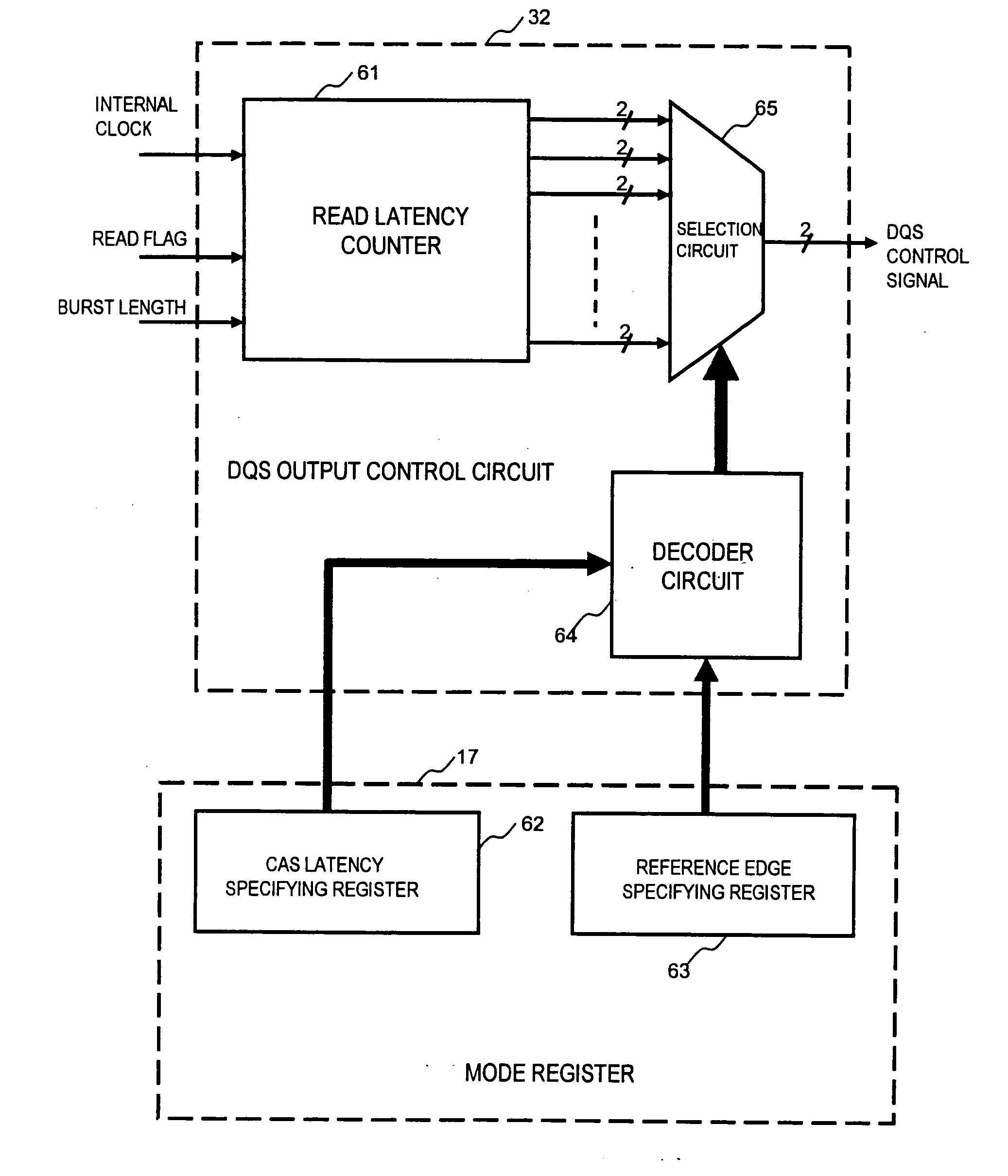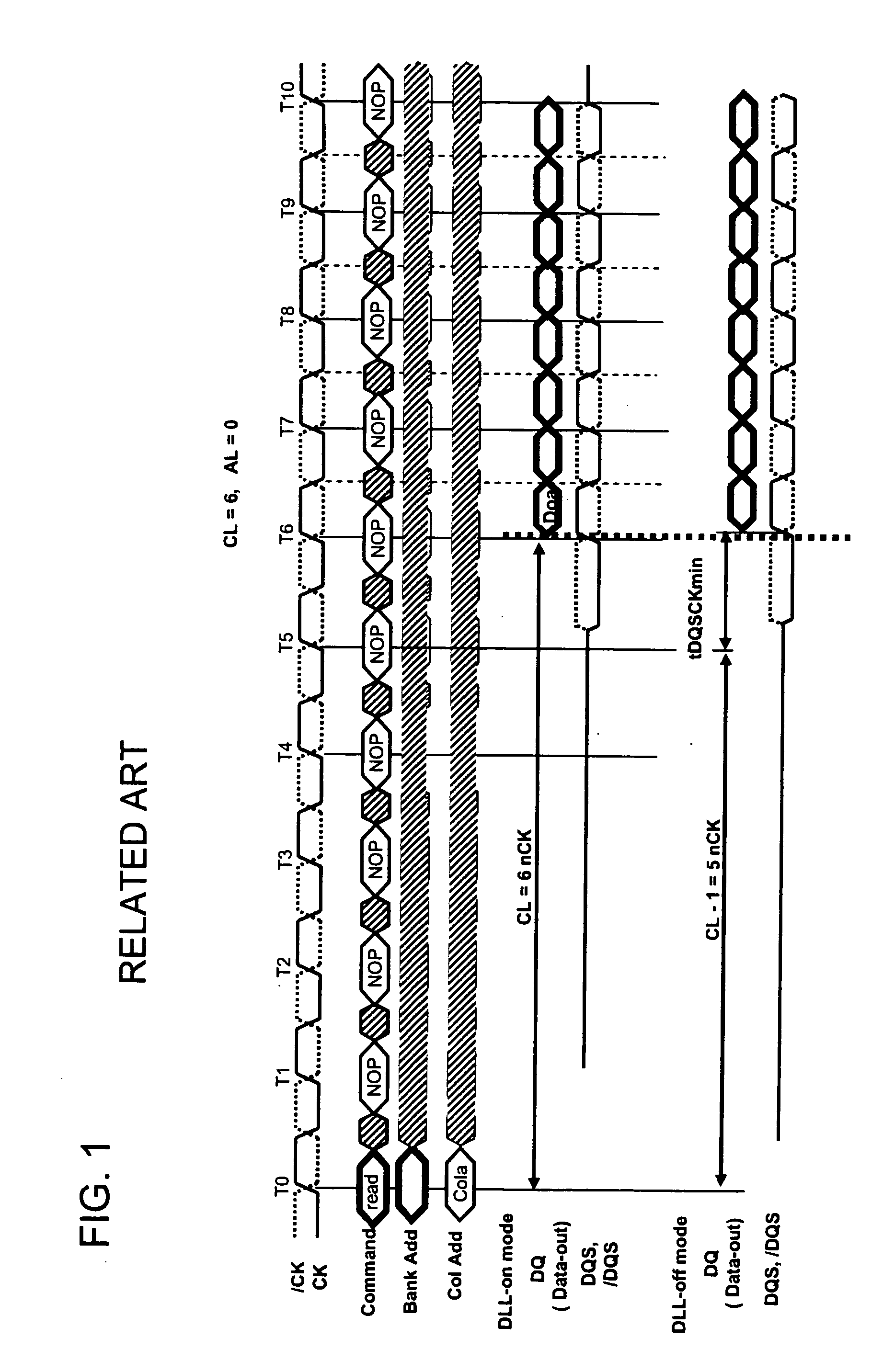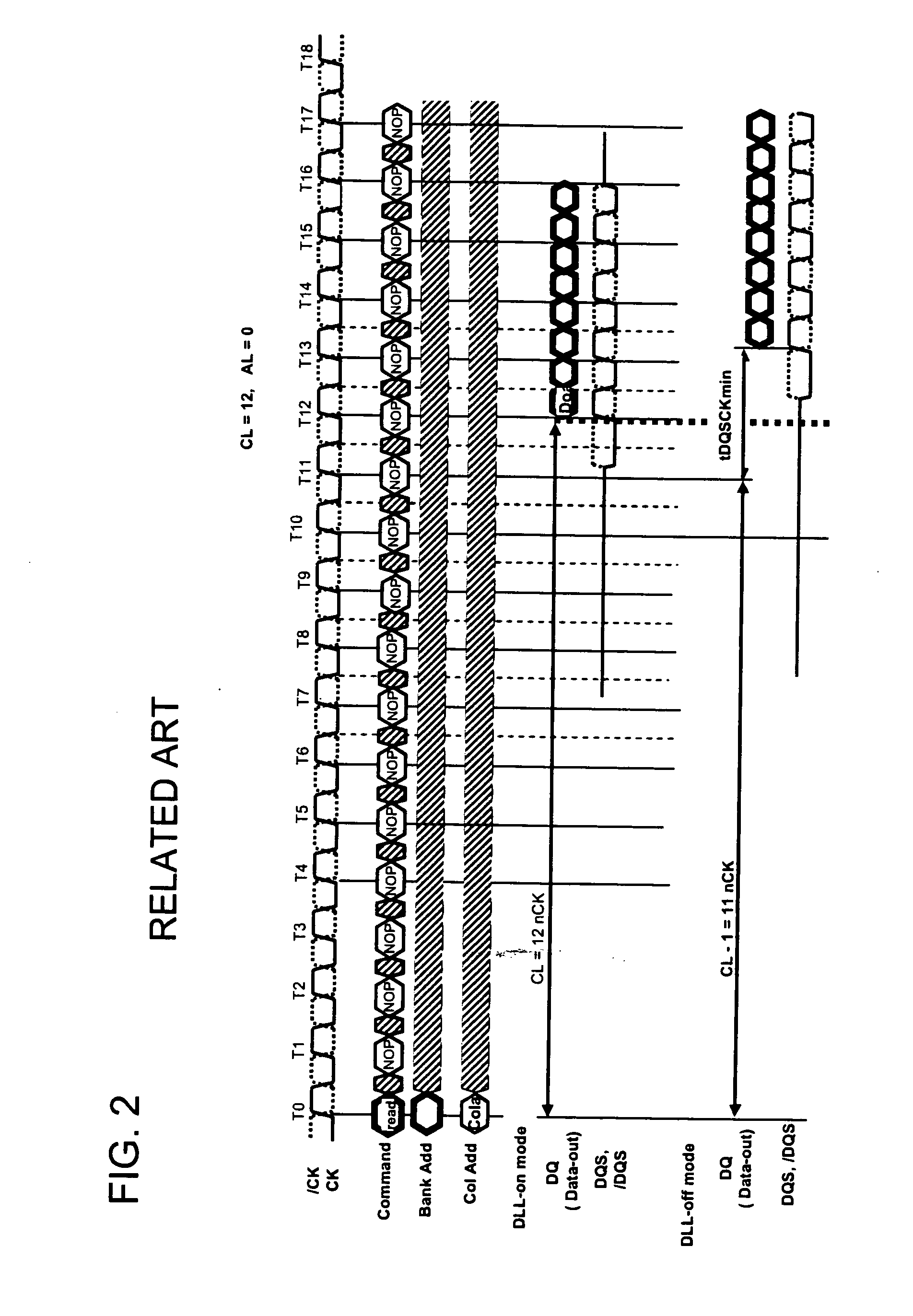Semiconductor memory device and read wait time adjustment method thereof, memory system, and semiconductor device
a semiconductor memory device and read wait time technology, applied in the direction of information storage, static storage, digital storage, etc., can solve the problem that the data read speed of the semiconductor memory device itself is not increased so much
- Summary
- Abstract
- Description
- Claims
- Application Information
AI Technical Summary
Benefits of technology
Problems solved by technology
Method used
Image
Examples
first example
[0074]FIG. 3 is a configuration diagram of an overall memory system in an example of the present invention. FIG. 3 is the memory system for reading and writing of 64 bits in parallel. A semiconductor memory device 1 is used for reading and writing of eight bits in parallel. Eight semiconductor memory devices 1 are connected in parallel to perform reading and writing of 64 bits in parallel. In the memory system in FIG. 3, a configuration is assumed in which two ranks of the semiconductor memory devices 1 of are respectively mounted on two DIMMs (Dual Inline Memory Modules). That is, the memory system is formed of the semiconductor memory devices of a total of four ranks which are indicated by DIMM1 Rank-1, DIMM1 Rank-2, DIMM2 Rank-1, and DIMM2 Rank-2. Each rank is further formed of the eight semiconductor memory devices 1. A total of 4 ranks*8=32 semiconductor memory devices 1 are mounted. FIG. 3 illustrates only three of the eight semiconductor memory devices 1 connected in parallel...
PUM
 Login to View More
Login to View More Abstract
Description
Claims
Application Information
 Login to View More
Login to View More - R&D
- Intellectual Property
- Life Sciences
- Materials
- Tech Scout
- Unparalleled Data Quality
- Higher Quality Content
- 60% Fewer Hallucinations
Browse by: Latest US Patents, China's latest patents, Technical Efficacy Thesaurus, Application Domain, Technology Topic, Popular Technical Reports.
© 2025 PatSnap. All rights reserved.Legal|Privacy policy|Modern Slavery Act Transparency Statement|Sitemap|About US| Contact US: help@patsnap.com



